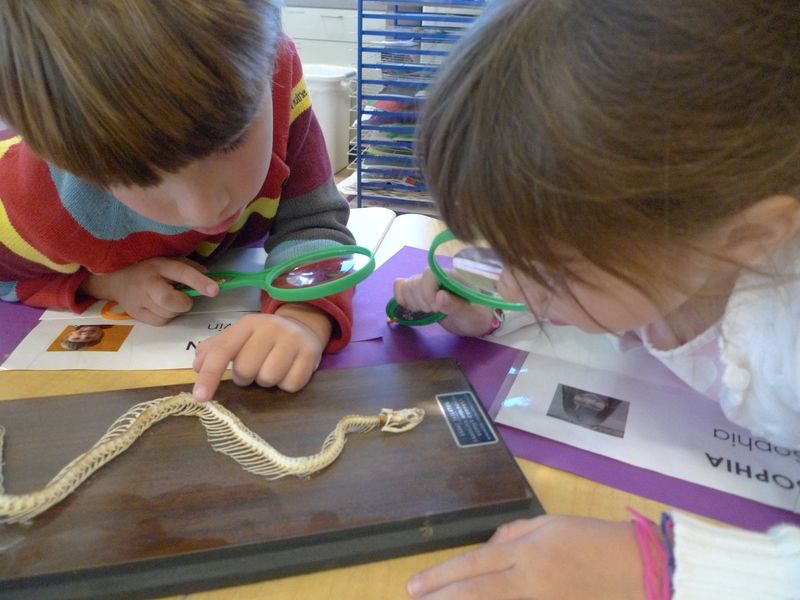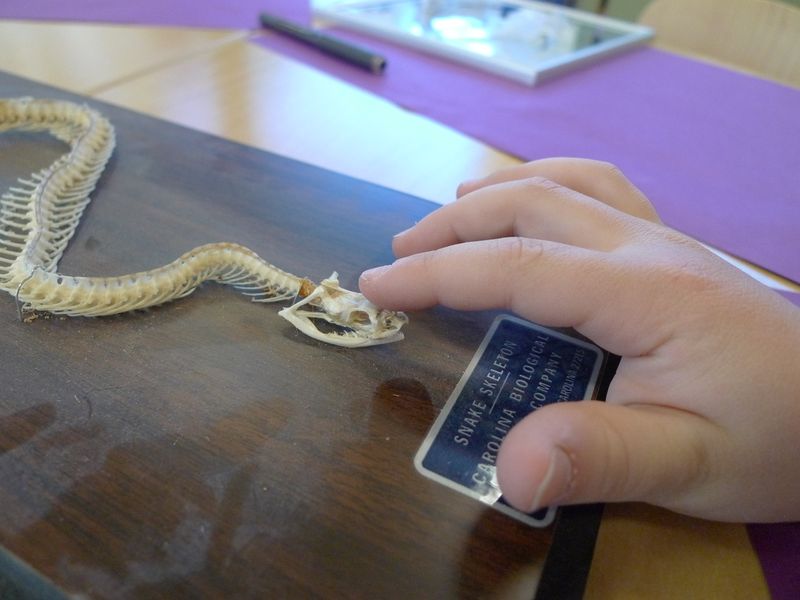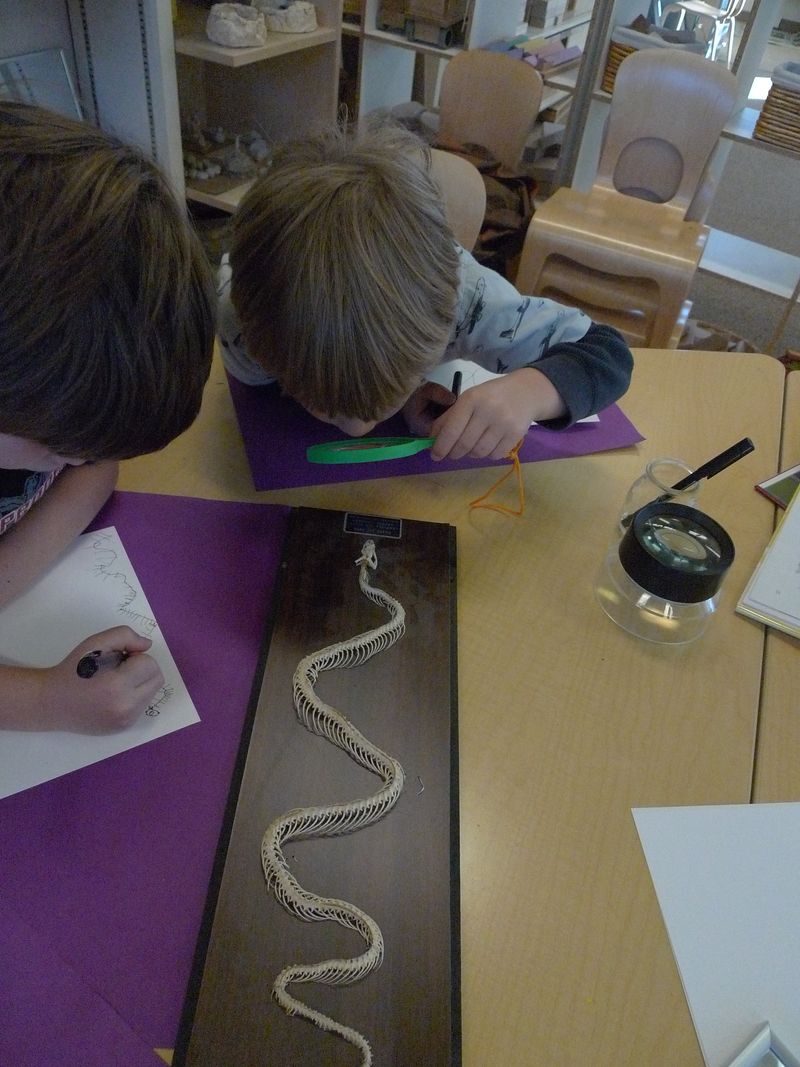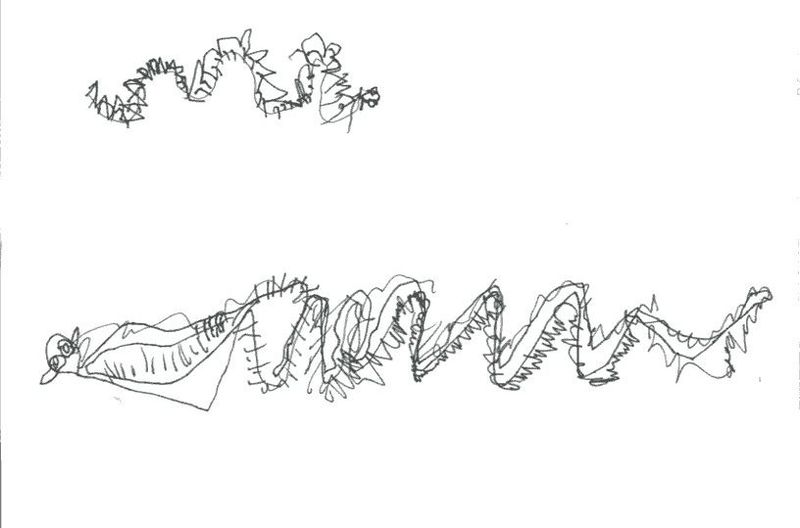Looking, Noticing and Observing
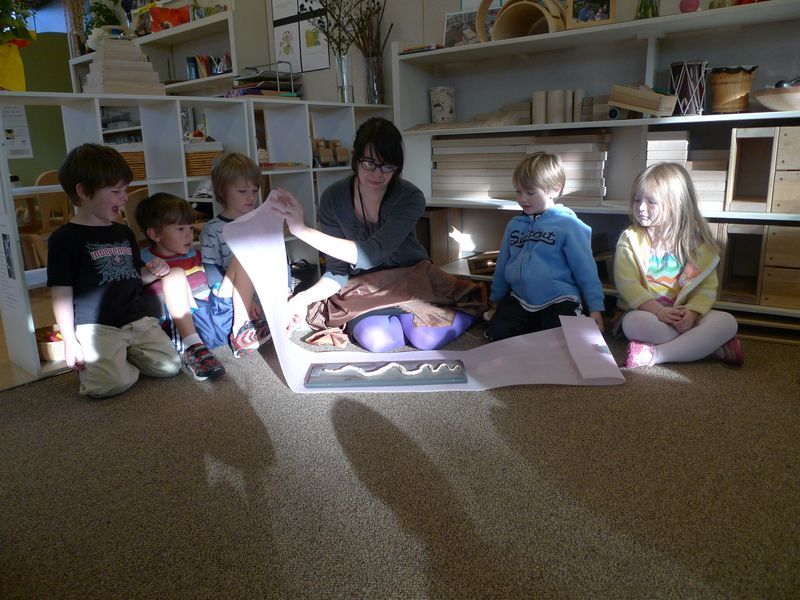
This week we have been fine-tuning our science and math brains by paying attention to things all around us. This has had us zooming out and paying attention to our surroundings (the museum and the arboretum), as well as zooming in and noticing things by looking closely.
Today, we were surprised by the arrival of a new friend in the classroom: a real snake skeleton!
After looking closely and paying attention to molted snake skin last week, we were now able to pay attention to the insides of the snake! With our owl eyes, we looked closely at the bones, lines and details that made up this reptile.
With our gentle touch, we were also able to observe with our sense of touch.
After careful observation, the children then captured what they noticed with black-line pen. Through observational drawing, children are given the time and space to look closely, communicate what they see and think and wonder aloud.
Observational drawing invites the children to slow down and use their sense of sight and touch to make meaning of what they see. It also allows the children to wonder and explore the object further by getting to know the object better. We call this “becoming friends” with the object.
The following is a small excerpt of the conversation at the observational drawing table:
Bronwyn: It looks like mountains when he curves.
Sophia: The mouth has little specks.
Calvin: He has bumps. He gets bigger then he gets smaller. I think he is a type of cobra.
Bronwyn: Maybe those things help him move.
Calvin: I think those held on to his scales.
Finn: The head feels like the meat of a crab. I am noticing that this side of the snake is different than this side. It’s smaller.


